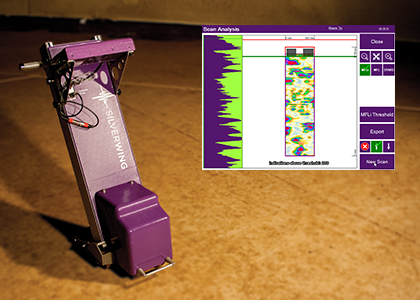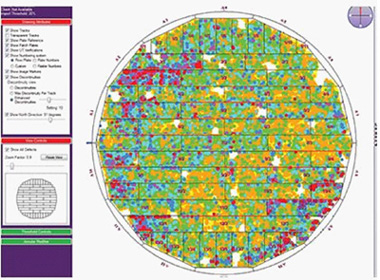Call Us :
407/2A2 UVS NAGAR, MATHAMPALAYAM - 641 019, COIMBATORE, TAMILNADU, INDIA


3D MFL Tank Floor Scanning: IRIS NDT Technologies continues to invest in the latest Technology with the addition of the Silverwing Computerized Magnetic Flux Leakage (MFL)Floor map 3D scanner with STARS technology to provide discrimination between top and bottom surface defects.
The innovative STARS technology (patent pending) adds an additional set of sensors to detect variation in magnetic field strength caused by top side defects, and combines this with traditional MFL indications to identify top or bottom location. The Floormap3D has a total of 256 sensors, enhancing lateral resolution to detect smaller defects, and reduce sensitivity to defect orientation. The top surface discrimination works effectively through up to 6 mm (1/4″) coating, enabling effective tank inspection without coating removal.
The metal bottom of a tank can produce an unnecessary inspection and maintenance effort in comparison to its initial cost. This reflects the difficulty in detecting corrosion of the tank floor, especially on the underside. This in turn can give rise to an insidious loss of product and damage to the environment with the inevitability of a reduction in profits.
Whilst it is unusual for a failed floor to lead directly to catastrophic failure of a storage tank, it is not impossible for it to do so. A more common failure mechanism is leakage through the floor damaging the tank foundations, which could lead to instability and eventual catastrophic failure. Nevertheless the integrity of the original tank bottom remains the prime means of preventing product loss and associated damage to the environment, and thus it needs to be maintained in a sound condition.
Recent developments in the methods available to inspect tank floors make remaining life predictions easier. The Floormap3D is the most advanced MFL floor scanner on the market today. ANS combines this unit with a complimentary inspection tool (Hand Scan HS 100 system) that is ideal for the restricted areas such as adjacent to shell wall; below internal piping and at plate intersections; also for storage tanks of diameters lower than 10 m, petal floor plate designs or in situ heating coils.
The degree of inspection and repair that it is economically sensible to perform before the whole floor is replaced will be influenced by many factors. These obviously include material and contracting costs, but a major factor will be the time and cost of cleaning the tank and preparing it for work. This latter cost will vary greatly depending on whether the tank is holding clean, light product or is handling crude or heavy oil or a dirty liquid.
Inspection data from the Handscan can be manually added into the SIMS reporting software when used in conjunction with the Floor map 3D floor scanners to produce a complete ‘fingerprint’ of the tank floor condition.